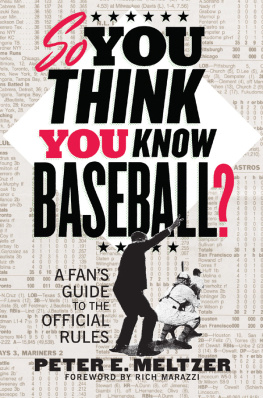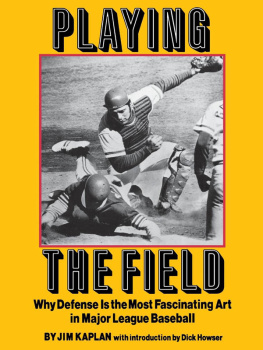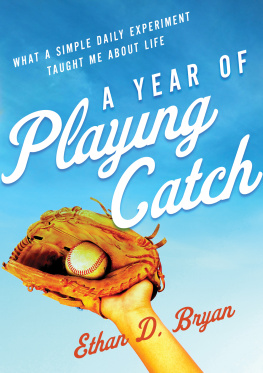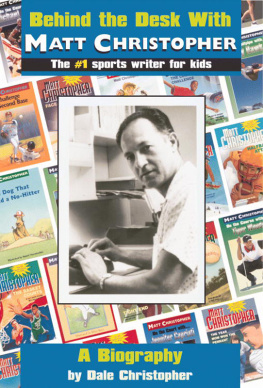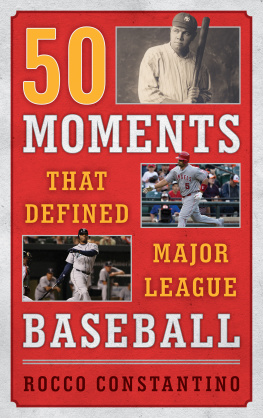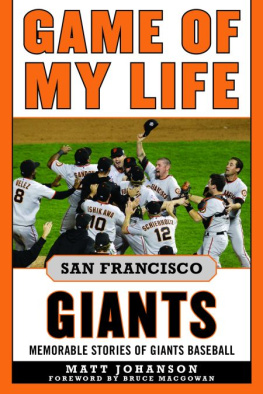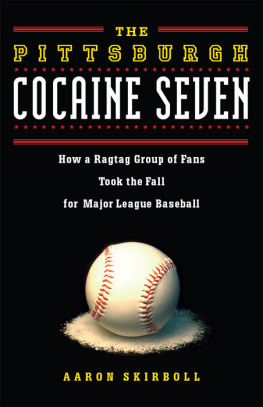Matt Christopher - Great Moments in Baseball History
Here you can read online Matt Christopher - Great Moments in Baseball History full text of the book (entire story) in english for free. Download pdf and epub, get meaning, cover and reviews about this ebook. year: 2009, publisher: Little, Brown Books for Young Readers, genre: Detective and thriller. Description of the work, (preface) as well as reviews are available. Best literature library LitArk.com created for fans of good reading and offers a wide selection of genres:
Romance novel
Science fiction
Adventure
Detective
Science
History
Home and family
Prose
Art
Politics
Computer
Non-fiction
Religion
Business
Children
Humor
Choose a favorite category and find really read worthwhile books. Enjoy immersion in the world of imagination, feel the emotions of the characters or learn something new for yourself, make an fascinating discovery.

- Book:Great Moments in Baseball History
- Author:
- Publisher:Little, Brown Books for Young Readers
- Genre:
- Year:2009
- Rating:3 / 5
- Favourites:Add to favourites
- Your mark:
- 60
- 1
- 2
- 3
- 4
- 5
Great Moments in Baseball History: summary, description and annotation
We offer to read an annotation, description, summary or preface (depends on what the author of the book "Great Moments in Baseball History" wrote himself). If you haven't found the necessary information about the book — write in the comments, we will try to find it.
Great Moments in Baseball History — read online for free the complete book (whole text) full work
Below is the text of the book, divided by pages. System saving the place of the last page read, allows you to conveniently read the book "Great Moments in Baseball History" online for free, without having to search again every time where you left off. Put a bookmark, and you can go to the page where you finished reading at any time.
Font size:
Interval:
Bookmark:
Copyright 1996 by Matt Christopher Royalties, Inc.
All rights reserved. Except as permitted under the U.S. Copyright Act of 1976,no part of this publication may be reproduced, distributed, or transmitted in any form or by any means, or stored in a database or retrieval system,without the prior written permission of the publisher.
Little, Brown Books for Young Readers
Hachette Book Group
237 Park Avenue
New York, NY 10017
Visit our website at www.HachetteBookGroup.com
www.twitter.com/littlebrown
Little, Brown Books For Young Readers is a division of Hachette Book Group, Inc.
The Little, Brown name and logo are trademarks of Hachette Book Group, Inc.
First eBook Edition: December 2009
Matt Christopher is a registered trademark of Matt Christopher Royalties, Inc.
ISBN: 978-0-316-09387-3
To my son, Marty
The Man Who Was Ready
One play made all the difference.
If not for one spectacular play he made in the 1920 World Series, second baseman Bill Wambsganss would be remembered only for his hard-to-pronounce last name. But because Bill Wambsganss was ready, because he was constantly thinking ahead and preparing himself for every possible situation on the field, his name is known to baseball fans as more than just a confusing collection of letters.
Just by being ready, Bill Wambsganss set a perfect example for young ballplayers. He made a play so special that it is still remembered more than seventy-five years after it happened.
Bill Wambsganss was born in Cleveland in 1894. His parents were German, and their last name is a combination of two old German words that mean overcoat.
The name looks harder to pronounce than it really is. When most people read it, they try to pronounce the m, the b, the s, and the g all at the same time. Somewhere in the middle, they trip over their tongues, and the name comes out as sounding like WAM-bus-gans.
But heres the trick: The b is silent, as in lamb, so the correct pronunciation is WAMZ-gans. But for most of Wambsgansss career, baseball games were not broadcast on the radio, so very few people knew the b was silent. All they saw was an assortment of letters in the box score printed in the newspaper. And because the name was so long, it was often abbreviated as Wmbgns, which only added to the confusion.
Most of Wambsgansss friends and teammates avoided the problem altogether. They called him plain old Bill, or Wamby for short. They didnt care how his last name was pronounced. All they knew was that he was a pretty good ballplayer, and that was all that mattered.
Wambsganss started playing in the big leagues in 1914 with Cleveland. At the time, the Cleveland team was called the Naps after their star second baseman Napoleon Lajoie (his name looks difficult to pronounce, too: its LA-zho-way). Lajoie was one of the greatest players in baseball, but by the time Bill Wambsganss joined the team, he was getting ready to retire. After backing up Lajoie for a season, Wambsganss became Clevelands starting second baseman in 1915.
Although Wambsganss was no Napoleon Lajoie, he proved himself to be a solid all-around player. He hit about .260 or .270, stole up to 18 bases a season, and was one of the best fielding second basemen in the league. He wasnt flashy, but he was steady. He made the plays everyone expected him to make.
After Lajoie retired, the teams name changed to the Indians. In 1920, for the first time ever, they won the American League pennant, edging out Chicago, New York, and St. Louis in a close race. In the National League, the Brooklyn Dodgers won the pennant. The two teams met in the World Series.
The clubs were evenly matched. Cleveland won the first game, 31, then Brooklyn won the next two, 30, and 21. In game four, the Indians tied the Series at two games each with a 51 win.
The teams faced off for game five on October 10 in Cleveland. The Indians were confident. Their best pitcher, thirty-one game winner Jim Bagby, was scheduled to pitch.
Bill Wambsganss had gotten off to a slow start in the Series, failing to get a hit in the first three games. But in game four, hed collected two hits and scored two important runs. Plus, at second base, hed been playing good ball. And Wambsganss knew that what he did on the field was just as important to his team as what he did in the batters box. He felt good going into the fifth game of the Series.
In the first inning of game five, Cleveland leadoff hitter Charlie Jamieson singled off Brooklyn starting pitcher Burleigh Grimes. Batting second, Bill Wambsganss got a pitch he liked and slammed it into left field for another hit. Indian center fielder Tris Speaker then bunted to load the bases.
Cleanup hitter Elmer Smith drove the ball over the right field fence for a grand-slam home run the first ever in World Series history. It brought Cleveland fans to their feet and gave the Indians a quick 40 lead.
Cleveland scored three more runs in the fourth to increase their lead to seven runs. It looked as if the Indians were going to win big.
But the Dodgers didnt give up. They knew that everything could change with one swing of the bat.
Leading off the fifth inning, second baseman Pete Kilduff singled to left field off Jim Bagby. Then catcher Otto Miller followed with another base hit. With no outs, the Dodgers had men on first and second.
The Cleveland crowd suddenly turned quiet. Pitcher Jim Bagby was in trouble. If the Dodgers got a few more base hits, the Indians seven-run lead could evaporate in a hurry.
Pitcher Clarence Mitchell stepped up to bat for Brooklyn.
At second base, Bill Wambsganss was ready. Despite Clevelands big lead, he knew this was no time to relax. One mistake could lead to a big inning for the opposing team.
Wambsganss considered the situation. Since the Dodgers were behind by seven runs, he figured they probably wouldnt try a special play, such as a bunt or a hit-and-run. They needed to close up the score, and trying to scratch out a single run by taking a chance with a special play didnt make much sense.
The runner at second could probably score on a base hit to the outfield. That would be the way for them to go. But if Wambsganss could knock the ball down before it went past him, he might be able to prevent a run. With that in mind, Wambsganss moved a few steps deeper at second base. If at all possible, he wanted to keep the ball in the infield.
Then Wambsganss looked at the batter. Clarence Mitchell was a left-handed hitter. That meant he was more likely to hit the ball to the right side of the infield. Although Wambsganss knew a double play would help his team, he knew it was more important to simply keep the ball in the infield and prevent the run. If I take another step back, he thought, I can still keep the ball in the infield,. even if Mitchell hits it to my left. He took another step back.
Wambsganss made all these decisions in just a few seconds. He stood at the edge of the outfield grass and pounded his glove, then crouched over, ready for anything.
Pitcher Jim Bagby checked the runners, then stepped toward the plate and threw a fastball.
Mitchell swung and hit the ball on a sharp line just to the right side of second base.
If Bill Wambsganss had been playing in his usual position, he wouldnt have had a chance at the ball; it would have been past him before he reacted. If he had been playing Mitchell to pull, the hit would have been too far to his right. But by playing a few steps deeper than usual, Wambsganss had given himself just a little more time.
At the crack of the bat, Wambsganss started running to his right. Kilduff, on second, and Miller, on first, heard the sound of the ball meeting the bat, put their heads down, and started running. The drive sounded like a base hit.
Next pageFont size:
Interval:
Bookmark:
Similar books «Great Moments in Baseball History»
Look at similar books to Great Moments in Baseball History. We have selected literature similar in name and meaning in the hope of providing readers with more options to find new, interesting, not yet read works.
Discussion, reviews of the book Great Moments in Baseball History and just readers' own opinions. Leave your comments, write what you think about the work, its meaning or the main characters. Specify what exactly you liked and what you didn't like, and why you think so.

